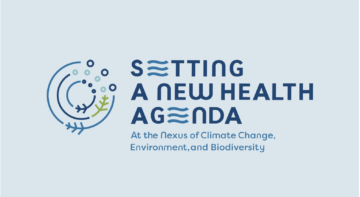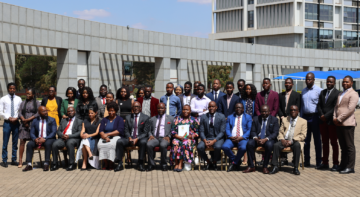Blogs

This week, various stakeholders in the health sector convened for the East, Central and Southern Africa Health Community (ECSA-HC) Best Practices Forum in Arusha, Tanzania.
The forum’s focus on exploring ways in which to stimulate collaboration between various stakeholders across different sectors couldn’t come at a better time. It’s been a little over a year since the development community celebrated the first year anniversary of the sustainable development goals (SDGs).
The SDGs, or Global Goals as they are sometimes referred, are the world’s development blueprint that seeks to ensure all citizens of the world, irrespective of race, nationality, age, gender (or any other social grouping) are able to have a better life. No one should be left behind. In addition, the progress in meeting their needs, today, should not compromise on the ability of future generations to meet their own needs.
Collective bargaining
The East, Central and Southern Africa region is currently faced with a double burden of disease, communicable and non-communicable diseases, among other health challenges. It is for this reason therefore that different sectors need to put their heads together and develop interventions that can push the continent forward.
The ECSA-HC Best Practices Forum presented an excellent opportunity for stakeholders across different sectors to listen and learn about various initiatives on how countries can address the high disease burden and suffering within the populations.
The main goal of the forum was to consolidate best practices that will be submitted to the ECSA region Health Ministers as recommendations to consider for tackling health challenges. The recommendations also prompt Health Ministers to follow up on implementation of previous resolutions lagging behind.
Ultimately, pursuing multi-sectoral collaboration is meant to gear African countries towards achieving sustainable development.
Bridging the resource gaps
While development experts emphasise that sustainable development is about leaving no one behind, the reality of this is resource intensive. According to experts, 2.5 trillion dollars are needed if the East, Central and Southern Africa region is to achieve the SDGs. Further, the region is losing more than its gaining back particularly due to the double burden of disease. Stakeholders across different sectors therefore need to consolidate their efforts. As noted by experts at the forum, health challenges need to be tackled by all, and not governments or ministries of health alone. Furthermore, SDGs are about ensuring equitable access to health for all, and governments are not able to cover the entire ground alone.
In addition to the double burden of disease, emergencies and outbreaks have added more strain on the health systems in Africa. This further necessitates multi-sectoral collaboration in order to tackle these health challenges and steer the continent towards sustainable development. For instance, all stakeholders need to mobilise funds in order to support efforts by governments to improve health. Stakeholders also need to adapt best practices that have been proven to be effective such as in policy formulation, programme implementation, communication and advocacy, among others. Adapting best practices and optimising them for local contexts ensures effective and efficient use of resources.
Effective communication and advocacy
Effective communication and partnership across different sectors is part of the World Health Organization (WHO) efforts to address the NCD burden in Africa. For stakeholders in health to collaborate effectively, this calls for well-coordinated and clear messages to ensure messages on « call to action’ by governments, development partners, civil society, the private sector and individuals, drive countries towards better health.
A critical component for successful multi-sectoral collaboration is the role of the media. Media here refers to mass media (radio, television and print newspaper outlets), and social media. The media has been referred to as the « fourth arm of government’ in some countries such as Uganda. Media therefore, is at the centre of multi-sectoral collaboration and integrating their role in communication and advocacy for improved health of Africans cannot be overemphasised.
For instance, the conflicting reports on the potential health risks of khat, has left many Kenyans confused on what research evidence really states. The media, has at different times, published various research findings from different institutions stating the health risks of khat such as increasing the risk of cancer. At other times, the same media has published research findings stating the « non-existence’ of health risks associated with khat. From the public’s perspective, and particularly those who chew the herb, the information in the public domain is confusing and individuals are in no position to make well-informed decisions. Researchers therefore need to ensure that their studies are rigorous and the methodology well-designed in order to ensure studies in the same context do not produce conflicting results.
Further, this calls for better coordination by government agencies concerned with quality control so they can provide accurate information on the potential health risks (or absence) of substances consumed by the public. This will ensure that the information disseminated by the media is accurate and timely.
Beyond rhetoric
Multi-sectoral collaboration is not a new conversation in development. However, as governments and other stakeholders in development continue learning from the shortfalls of the millennium development goals (MDGs) and making amends in how they work towards the SDGs, the culture of different sectors working in silos has to end. Stakeholders need to integrate their efforts and ensure multi-sectoral collaboration doesn’t become another rhetoric in development circles, rather it becomes a tool to drive Africa towards real change.
This blog is based on discussions and reflections from the ECSA-HC Best Practices Forum held in Arusha, Tanzania from 9th to 12th April 2017.
Related Posts





